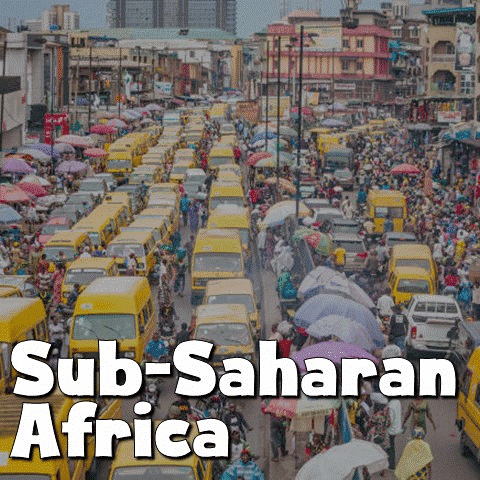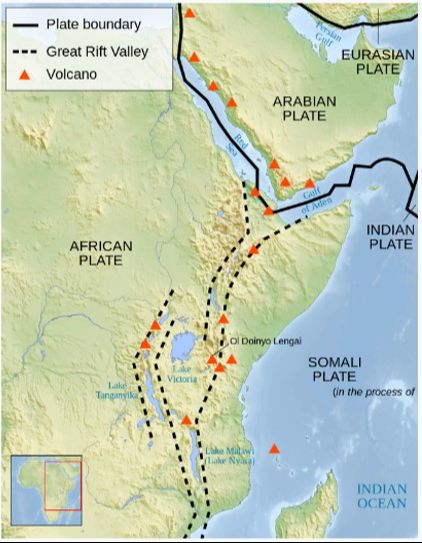The Great Rift Valley

Africa's Great Rift Valley covers parts of Ethiopia, Kenya, Tanzania, Uganda, and Malawi. It extends over 3,700 miles from the Jordan Valley in the Middle East, through the Red Sea, Ethiopia, Kenya, Tanzania, and ends at Mozambique in East Africa.
The valley is a result of tectonic activity with the valley located over a plate boundary. The African and Arabian tectonic plates are slowly pulling apart, causing the Earth's crust to fracture and form the deep valley along with volcanic activity. Eventually, the plates will pull far enough apart to split East Africa off from the rest of the continent.
The climate and biomes of the Great Rift Valley vary significantly along its length, ranging from arid deserts to lush forests. In the northern section, hot, dry conditions exist with sparse vegetation. The southern section features a more equatorial climate with abundant rainfall and diverse ecosystems.
The Rift Valley is home to a wide range of biomes, including savannas, grasslands, montane forests, and freshwater lakes. These diverse habitats support rich biodiversity, including endemic species such as the Ethiopian wolf, Grevy's zebra, and various bird species found in the Rift Valley lakes.
The Great Rift Valley has played a pivotal role in shaping human settlement patterns and cultural development in East Africa as well.

Ancient hominid fossils discovered in the Rift Valley, such as Lucy who lived 3.2 million years ago, have provided crucial insights into human evolution and migration patterns. The valley's fertile soils and freshwater sources have supported agricultural activities for millennia, leading to the emergence of complex societies and civilizations such as the Kushite Kingdom (1070 BCE - 350 CE).
Today, the Rift Valley remains densely populated, with millions of people residing in its vicinity. Urban centers such as Nairobi, Kenya, Addis Ababa, Ethiopia, and Arusha, Tanzania, have grown along the valley's edges, serving as hubs of commerce, administration, and cultural exchange.
The Great Rift Valley is also home to diverse ethnic groups who have adapted to the valley's unique environment. Indigenous communities such as the Maasai, Samburu, Oromo, and Kikuyu have developed pastoralist and agricultural lifestyles suited to the Rift Valley's ecological conditions.
Economically, the Rift Valley plays a major role in the region's development, serving as a center for agriculture and tourism.

Agriculture, including the cultivation of crops like coffee, tea, and corn, forms the backbone of the local economy, providing livelihoods for millions of people.
The Rift Valley's natural beauty, wildlife reserves, and archaeological sites attract tourists from around the world, which also contribute significantly to the region's revenue and employment opportunities.
However, competition over land, water, and resources in the Great Rift Valley has led to conflicts between pastoralist communities, agriculturalists, and conservationists. Additionally, the discovery of oil, gas, and mineral deposits in the region has raised concerns over resource exploitation and environmental degradation.
The Rift Valley intersects national borders, making it a focal point for cross-border cooperation and conflict resolution. Efforts to promote regional integration, economic development, and conservation have been hampered by political tensions and competing interests among neighboring countries.